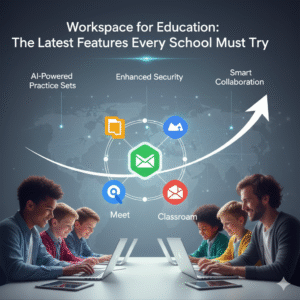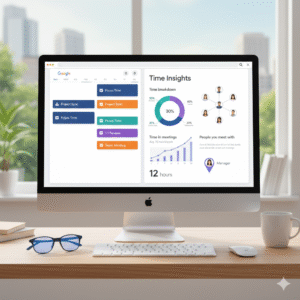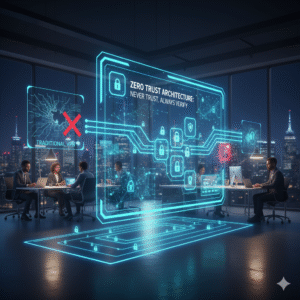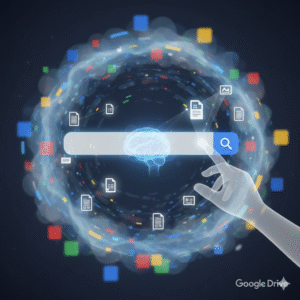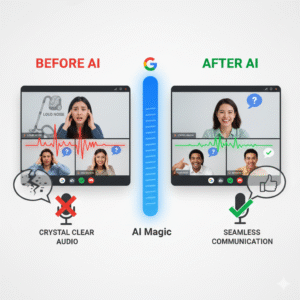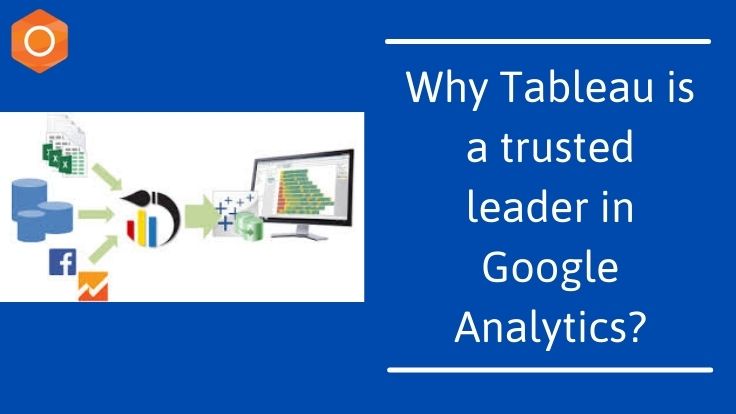The modern workplace demands speed, efficiency, and seamless collaboration. Google Workspace already provides powerful tools like Gmail, Docs, and Drive. However, the true strength of this ecosystem lies in its ability to connect with specialized external applications. This connection eliminates the constant need to switch between tabs and programs, which is a common drain on productivity. Therefore, the Workspace Marketplace has become a critical hub for innovation. It constantly introduces new add-ons and integrations that dramatically expand the functionality of your favorite Google apps. Today, we will explore the latest and most impactful Workspace integrations that are transforming how teams work and collaborate, making your existing tools dramatically smarter and more powerful.

The Rise of AI-Powered Workspace Integrations
Artificial Intelligence (AI) is no longer a futuristic concept; moreover, it is embedded directly into our daily tools. This trend is evident in the latest batch of Workspace integrations. Specifically, new add-ons are leveraging AI to automate complex, time-consuming tasks right within the Google environment. For example, AI-powered add-ons can analyze the content of a long email thread in Gmail and instantly generate a summary, saving precious time.
Furthermore, tools using Gemini’s deep research feature can now pull context from your Drive, Docs, and Sheets to create customized reports and analyze data immediately. Consequently, the user experience becomes deeply personalized and highly efficient. These smarter integrations allow your team to focus on strategic work, rather than manual data synthesis, which is a major benefit of modern Workspace integrations.
Project Management and Communication Workflows
One of the biggest pain points in collaboration is keeping project management separate from communication. Now, new Workspace integrations are closing this gap completely. For instance, enhanced add-ons for leading project management platforms like Asana, Trello, and Smartsheet allow users to create and update tasks directly from within Gmail or Google Chat. Therefore, an email request can instantly become a tracked task without leaving your inbox. Similarly, communication tools like Zoom and RingCentral offer deep calendar integrations. They allow users to schedule, manage, and start meetings with a single click from Google Calendar. Consequently, the entire workflow, from discussing a project to scheduling a meeting to completing a task, happens fluidly across integrated applications, all thanks to smart Workspace integrations.
Data Management and CRM Integration Excellence
For sales and marketing teams, seamless data flow is essential. New Workspace integrations are making it easier than ever to manage customer relationships and data without context switching. Specifically, updated add-ons for popular CRM systems like Copper allow for bidirectional data synchronization with Google Sheets. Therefore, pulling lead data or updating client contact information can be done directly from a familiar spreadsheet interface.
Furthermore, new add-ons for specialized data platforms enable users to export campaign performance data from advertising platforms straight into Google Sheets for instant analysis. Consequently, the finance team can easily track marketing ROI, and the sales team can access up-to-date customer details right within Gmail. This tight connection between data sources and Google Sheets dramatically improves data integrity and business intelligence across the whole organization.
Document Workflow Automation: E-Signatures and Forms
Paper-based processes or tasks that require switching platforms severely slow down business. Now, document workflow Workspace integrations automate these necessary steps. For example, robust e-signature add-ons like DocuSign and Signeasy allow users to securely sign, send, and track documents directly from Gmail, Google Docs, or Google Drive. Therefore, legal contracts, HR onboarding documents, and vendor agreements can be executed instantly. Furthermore, tools like Form Publisher or Jotform enhance Google Forms. They automatically convert form submissions into professional PDFs, certificates, or structured documents saved instantly in Drive. Consequently, tasks like generating reports or managing new hire paperwork are automated end-to-end. This is a massive time-saver for administrative and legal teams, proving the power of specialized Workspace integrations.
The Security and Compliance Focus
As the reliance on third-party tools grows, security and compliance become even more critical. Google has made significant improvements to the Workspace Marketplace to address these concerns. Specifically, many top-rated add-ons now feature independent security verification badges. This means the app has undergone a rigorous third-party assessment to confirm it meets high security and privacy standards. Therefore, administrators can install integrations with greater confidence. Furthermore, the marketplace offers more granular administrative controls. This allows IT teams to manage exactly which permissions an add-on can access and control which employees are permitted to install specific integrations. This increased transparency and control ensure that while teams gain productivity, they never compromise on data security or regulatory compliance.
Conclusion
The continuous introduction of powerful new add-ons and deeper Workspace integrations confirms that the Google Workspace platform is more than just a set of applications; moreover, it is a dynamic, highly customizable ecosystem. From AI-driven insights in Docs and Sheets to seamless project management and automated e-signatures, these tools are redefining workplace productivity. Therefore, to truly supercharge your team’s efficiency, you must regularly explore the Workspace Marketplace. Finding and deploying the right integrations eliminates context switching, reduces manual work, and allows your employees to focus their energy on high-value, strategic tasks. Ultimately, the power of Google Workspace is maximized when it is seamlessly connected to the best tools the industry has to offer.
Frequently Asked Questions (FAQs)
1. What is the main benefit of using new Workspace integrations?
The main benefit is eliminating context switching. New Workspace integrations allow users to perform tasks from external applications (like creating a task or signing a document) directly within familiar Google apps like Gmail or Docs. This saves time and minimizes distraction, significantly boosting overall productivity.
2. How are AI-powered add-ons changing productivity in Workspace?
AI-powered add-ons are changing productivity by automating complex cognitive tasks. For instance, they can use the Gemini model to analyze long email threads, summarize documents, or pull data from Drive to generate customized reports directly within the Workspace environment.
3. Where can I find and install new Workspace add-ons?
You can find and install new Workspace integrations in the Google Workspace Marketplace. You can access it through the waffle icon (the nine-dot grid) in the top-right corner of any Google app, or by navigating to the “Extensions” menu within apps like Docs or Sheets.
4. How does the Workspace Marketplace ensure the security of third-party add-ons?
The Workspace Marketplace prioritizes security by requiring all apps to undergo a review process. Furthermore, many leading third-party apps now feature an independent security verification badge, assuring administrators that the add-on meets high security and privacy standards.
5. Can I use Workspace integrations to automate document signing?
Yes, absolutely. Robust Workspace integrations with e-signature providers like DocuSign or Signeasy allow users to request, sign, and track legal documents and contracts directly from within Google Docs, Google Drive, and Gmail, which automates and secures the entire workflow.
Also Read: Google Sheets Meets BigQuery: Handling Enterprise Data Like a Pro



